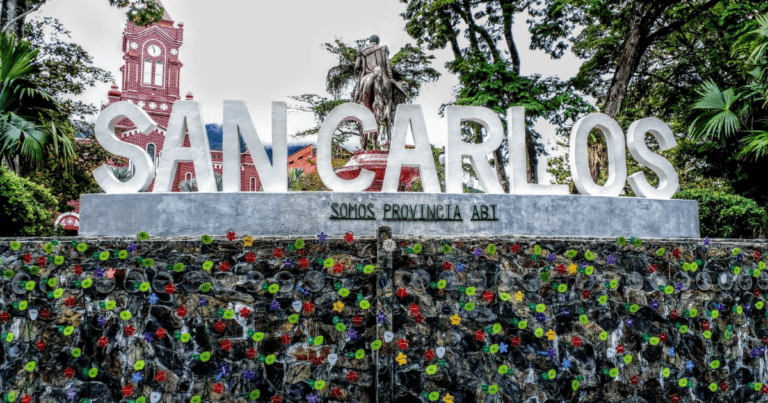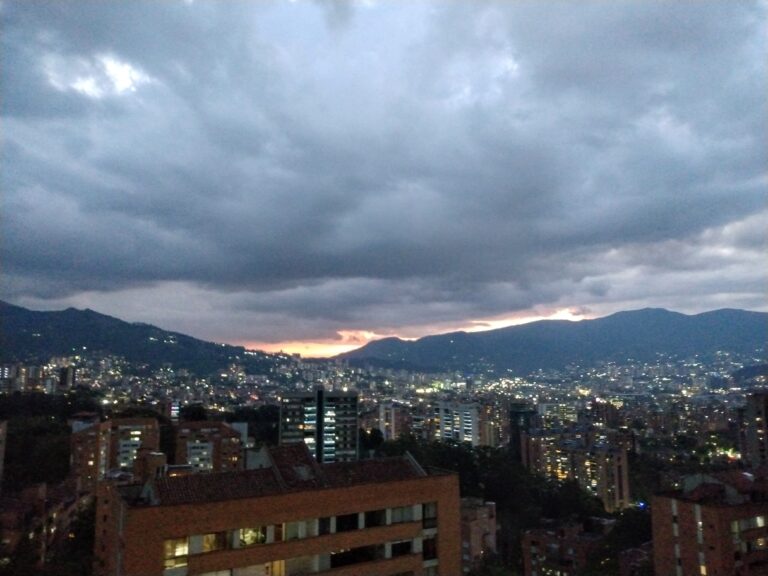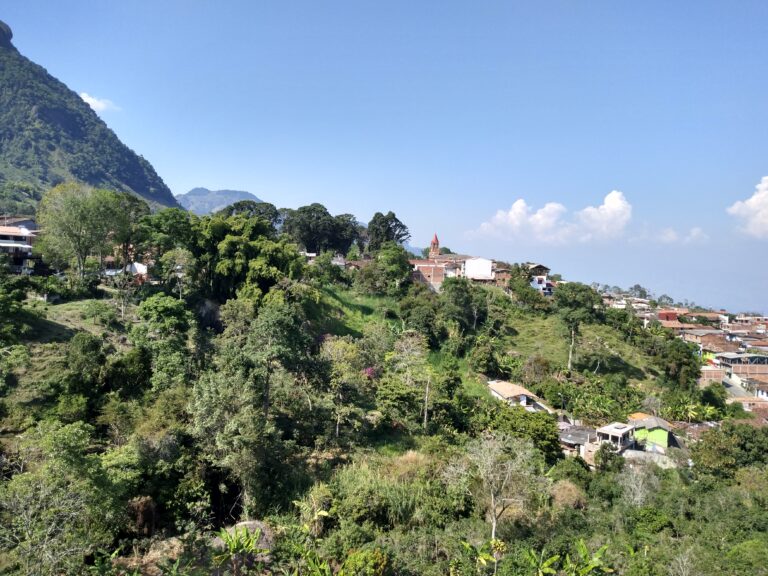The 8 Most Popular Myths and Legends of Colombia
Colombian mythology is a captivating blend of indigenous, African, and European traditions, giving rise to various captivating myths and legends. Across generations, each cultural group has infused its essence into the tapestry of mythical creatures, weaving intricate narratives that have endured the test of time.
From the haunting allure of El Sombrerón to the mysterious tales of La Llorona, these myths and legends form an integral part of Colombia’s cultural heritage. This rich amalgamation has spawned many imaginative stories and served as a poignant testament to Colombia’s cultural heritage. By retelling these myths, each culture finds its voice, ensuring that its legacy remains alive and vibrant in the collective consciousness of the Colombian people.
The first time I heard these myths and legends from Colombia, I was captivated. After hearing the first one, the only thing I could say was, are there any more? How many myths and legends can exist in one country? I live in Colombia with a local family, and I was not disappointed with the stories I was told. My favorite myths and legends of Colombia are the following:
The Legend of La Llorona: The Weeping Woman

One of Colombia´s most famous myths and legends is that of La Llorona or The Weeping Woman. This myth is prevalent throughout Latin America and is present in all countries and regions. However, each story has different names and slightly different variations.
Antioquia, Colombia, the legend is called La María Pardo, Nariño, La Llorona is sometimes called the Tarumama. Sometimes, even the physical description of this woman varies depending on the place. Some peasants describe her as a woman with a bony face, long hair, dirty clothes, and carrying a dead child in her arms.
La Llorona’s long and heartbreaking wails and chilling screams make the people who listen to it feel terrified and have nightmares.
This hideous spirit belongs to that of a woman who deceived her husband. When he discovered this, he wanted to leave her and go elsewhere with her children, but she, filled with fury because her husband would leave, murdered her children in the river. Then she, sorry for what she had done, jumped into the water and drowned. Since then, she has wandered the world crying for her children.
They say that she will persecute women who are bad mothers, tormenting them with hideous nightmares for them to change and take good care of her children. If not, La Llorona will eat her and her children’s souls. In Colombia, she appears on the banks of rivers and among the coffee plantations, looking for unfaithful women to punish them.
The Legend of The Alligator Man, El Hombre Caimán

On the coast of Colombia lies one of the largest rivers in the northern Andes of Colombia, The Magdalena and on that river lies a small river town, Plato. During the early colonization of Colombia, the Spanish conquistadores used the river to communicate between Bogotá and the Caribbean Sea port in Cartagena de Indias and, thus, with Europe.
The locals would use this river as a place to bathe, and if you have not heard, the rumor is that the women in the north of Colombia are the most beautiful in all the world. So it comes as no surprise a young man, Saúl Montenegro, became obsessed with watching the women bathe.
Except he began to get paranoid; he was afraid one of the women would see him and his dirty little secret would end. He had an idea; he would visit a witch in La Guajira that he knew and ask her for a solution.
La Guajira is the northernmost part of Colombia and borders Venezuela. Rumored that most of those in this town, to this day, are, in fact, witches or brujas. The perfect spot for Saúl to obtain a potion. Saul expected to get away with spying on the girls. He was incorrect.
As expected, the witch offered a solution involving two potions: a red potion and a white potion. The red potion would turn him into a caimán so he could spy on the women incognito, and the white potion would turn him back into a man.
Caimán, spotted in the rivers of Colombia, is not an abnormality. The caimán(cayman) are not alligators; however, they look similar and come from a family similar to alligators or crocodiles, as all three are amphibious carnivores.
A caimán in the river often requires a swift exit, easily disguised in the muddy waters, only their eyes seen. For Saúl, this was perfect; he would drink the red potion and be able to spy on the women while remaining incognito.
The only problem with turning into a caimán was that he needed a friend to accompany him in administering the white potion when his spying was complete. The same friend would accompany him each day; however, one day, the specific friend could not go with Saúl on his daily spy mission, and another friend volunteered.
When it was time for the man to administer the white potion to Saúl, he became frightened. He did not expect to be afraid of the caimán, as it was only Saúl. Yet that is not what happened; he feared for his life.
The man dropped the white potion bottle, which broke on the ground; some did land on the caimáns head. Saúls head returned to normal, but the rest of his body remained that of a caimán.
The women found out about this, spreading fear throughout the town, and they never returned to the river. The only woman to visit Saúl was his mother; she would bring him his favorite foods: cheese, cassava, and bread soaked in rum.
The mother attempted to find the witch who made the potions, but she could not and died of sadness. Saúl alone in the river. Saul carried along the river to the mouth of the Magdalena, where the local legend lives, and on occasion, the local fishermen see him wandering the banks of the river near Barranquilla.
Every year in his memory in Plato, there is a festival for the Caimán Man, El Hombre Caimán.
The Legend of Juan Machete

It is a story of greed. Juan Machete wanted to get to the good parts without putting in the effort to build the foundation first, skipping the intermediate steps.
Juan Francisco Ortiz lived in the Orinoquía region of Colombia, the llanos or plains. This region is home to many cattle farmers, as it is the perfect place to raise beef cattle. Juan was unhappy that his farm was not producing as much as he wanted; Juan wanted to be richer and further ahead in life. Instead, Juan was a poor cattle farmer.
He saw himself as a poor farmer with a wife and two children. But, in his eyes, this was not enough; he wanted more. Juan wanted power, land, fortune, and fame. Blinded by greed and the inability to wait to achieve his goals, he made a pact with the Devil.
Juan asked to be the region’s wealthiest and most powerful man, and the Devil promised to make it so. The only rule is that he must go willingly when the Devil comes to collect.
The price of being the wealthiest and most influential man in the region will only cost his soul and the soul of his wife and children. So Juan Machete agrees to give the soul of his wife and children.
Once the Devil has his verbal agreement, he tells Juan the final steps. First, Juan must gouge out a chicken’s eyes, gut a toad, and bury them. In two days, once this is complete, the Devil will deliver two prize cows, the village’s most productive.
They arrived as promised by the Devil and went on to birth two more cows, and so on. The Devil also sent Juan 50 men to help with the land at no cost.
It led Juan to become the wealthiest man in the region. He accumulated treasures and riches beyond his wildest imagination. Then, one day, Juan noticed a bull in his field that he did not recognize.
He thought it must be one of the neighbors as It was bigger than his other bulls and had big white hooves. Juan tried to get the bull to leave his land. To go back to where the bull belonged but was unsuccessful. The bull refused to leave Juans land.
Juan allowed the bull to stay as he went to work for the day. In the following days, the bull remained. Juan continued to get richer until one day when he returned from work, he found his wife and children dead in the corral where the bull stayed. The bull had blood on its horns, and Juan realized that the Devil had come to collect what was his. Juan tried to kill the bull but could not, as the bull healed fast.
Juan Machete got scared because he did not want the bull/devil to take away his treasures or life. So Juan ran into the savannah, buried his treasure, and never returned. Some say that Juan Machete still wanders the plains, protecting his treasures.
Juan Machete curses anyone who comes searching for the treasure; if they find it and steal any treasures, Juan will hunt them down.
So would you make a pact with the Devil to get you to where you think you want faster? A bypass, or are you willing to pull up your bootstraps and get dirty to earn your treasures? I get it; we all want a shortcut, a secret, the magic bullet. The secret is blood, sweat, and tears.
There’s a lot of blood, sweat, and guts between dreams and success.–Bear Bryant.
The Legend of La Muelona

According to the legend, La Muelona, or ¨Colmillona, ¨ is a woman with big teeth—some say fangs. The myth comes from the Andean region of Colombia. La Muelona was a beautiful and ambitious woman. She had long hair, big eyes with huge teeth, and always smiled; some say her mouth resembled a horse.
La Muelona was known for attacking gamblers, unfaithful men, and alcoholics. She would often appear to them on the side of the road between 6-8 pm, transforming into a seductress. Once she had them within her control, she would use her teeth to crush the men and eat them. Some rumors say that you can hear her chewing on the bones of her victims. There is also a second part to the legend; some say she has sex with men before eating them. Either way, they are her prey.
Some say she came from La Maga (the magician), a woman from Spain. Skilled in predicting the future, magick, and punishing men, using her divination skills to earn money. However, she was also the most beautiful woman in town, and when the men came to utilize her services, they fell in love with her; she had the most beautiful smile and teeth.
They would leave their wives and turn to alcohol and gambling. The women in town did not like her there; this only fueled La Maga. Then, she decided to open a brothel in a religious pueblo in the Antioquia region of Colombia. The legend states that her beauty destroyed the town, and the men threw their money at the women La Maga employed. She only used the most educated, knowledgeable, and beautiful women from the area.
La Maga continued to get pushback from the priests in town, her business grew, and she became more affluent, prosperous, and eviler. Unfortunately, she also continued her business of divination and conjuring evil spirits, along with the brothel house, which would ultimately lead to her demise.
Little did La Maga realize that the townspeople had a punishment planned, and she began to suffer from sores on her skin that eventually covered her whole body. Ultimately, this illness led to her death. During her death, the neighbors said they heard her inside her house swearing revenge towards unfaithful, drunk, and vicious men.
Some people affirm that her spirit appears on the banks of the paths, especially when evening falls. At first, she looks like a seductive, attractive woman, so many men approach her quickly. When she shows them her big teeth with fangs, the men get scared, and she devours them; so, did the legend of Maga morph into the tale of La Muelona?
The Legend of La Patasola

Have you ever thought about cheating on your spouse? The Legend of La Patasola will make you think twice. This Colombian Myth and Legend will be a reminder to be faithful to your spouse.
La Patasola is the mythical legend of the one-legged woman originating in Colombia’s Andean region. She lives deep in the jungle along Colombia’s Pacific coast and the north of Ecuador. She is known as “La Patasola” because she walks with only one foot. Some refer to her as the Andes’ protector and full of vengeance.
La Patasola preys on males who wander into the jungle. If her victim is not alone, she will use her seductive tactics to get him alone; often, it is a scream or a cry for help. She is said to be a tall, pale, beautiful woman with long, matted black hair and big eyes. She is found alone in the woods. If you get close enough, you will notice she is standing on one leg.
So how did she become La Patasola, stalking the night looking for victims?
Some say that La Patasola is her soul, representing the pain of a woman who lost her children due to her actions. She was once a beautiful woman married to a peasant farmer; they had three children. Some say she was too lovely to be with a peasant and deserved more. So, she was known to indulge in her desires.
One day, her husband came home early from work and found her with another man; in a fit of rage and jealousy, he murdered her lover. She attempted to run away but was not fast enough; he caught her leg and cut it off.
He left her lying with her leg cut off, and she bled to death. The husband then set fire to the house where they once lived and took the three children far away. Some say La Patasola is her soul wandering in pain, looking for her children.
La Patasola also enjoys seducing unfaithful men. She transforms into the beautiful woman she was, waits for a man to be alone, and catches his attention. Some say she is a vampire or a succubus, and once she is alone with the man, she turns into the horrible, vile creature she is and devours her prey alive.
Some say that when she is happy, she will sing the following song:
“I’m more than the siren,
I live alone in the world
and no one can resist me
because I am the Patasola.
On the road, at home,
on the mountain and the river,
in the air and in the clouds
all that exists is mine.”
Maybe it is an old wives tale that husbands tell their wives to keep them faithful; as with most legends, there is always an underlying fear factor.
The Legend of El Silbón

El Silbón (The Whistler) is a spirit found in Colombian (and Venezuelan) legends, specifically in the Los Llanos region of Colombia—a tropical grassy plain in the Orinoco basin spread between Colombia and Venezuela.
The legend states that El Silbón was once a spoiled child, born to very loving parents. They wanted to provide and give him anything he wanted; little did they know that this behavior was toxic and would end him. One night, the boy demanded venison for dinner and would not stop crying and screaming. To please him, the father went out hunting for a deer.
After hours of searching, the father came back empty-handed. When the son saw this, he was infuriated. How could his father not bring back the deer as requested? In the son’s eyes, this was unacceptable, and he took matters into his own hands. The son took the knife from the father and killed him. The mother and grandfather saw what had happened, and the grandfather punished the boy.
As punishment, he was tied to a tree, beaten, and left with chili on his wounds; some say lemon and salt. Eventually, he is released from the tree, and his grandfather gives him a sack full of his father’s remains, curses him, and sends him to the plains. As the boy walked away from his grandfather, he began to whistle shortly after the attack dogs were released and killed him.
The grandfather’s curse ¨You should not have done that to your father; your soul is damned for eternity¨.
El Silbón is a tall, thin ghost wearing a big-rimmed farmer hat. He carries a bag of bones from his victims, or it could be only his father’s bones; the bag rattles as he walks. Many think he is a death omen; if you wander the plains at night, you might be next.
He slowly stalks his victims, and often, his whistling can grow louder and softer to confuse his victim. If you can hear its whistle, it is because the Silbón is already close. However, if you can no longer hear the whistle, he is already upon you.
Many say he looks for those who do bad things against the family, using their souls and sins to feed himself. On the other hand, some say he does not pursue any victim except the closest one.
The Legend of La Ciguapa

There is a legend that originates from the mountains of the Dominican Republic. Some described a woman who lives in the woods with long black hair and backward feet—rumored to prey on farmers who are alone and lonely. She calls you in with whispers and gentle sounds; some describe whining or soothing voices, which entices you to go to her.
She is sensual and beautiful; the only thing covering her is her long thick, midnight black hair that goes past her butt, some even say to her feet. La Ciguapa has dark, stunning eyes that call you to her. If you look her in the eye, you will follow her to wherever she wants you to go, hypnotic. Finally, she leads you to her cave, where you may think she wants to seduce you sexually; however, she has other plans.
A succubus with only one thing in mind: feeding, fulfilling her one genuine desire. Once she has you in her grips, she will feed on your blood and devour your flesh, only leaving your bones. Some even say she will trap you for her pleasures, trapping their soul for eternity.
There is also another part to this story. Possibly one that is closer to the truth of who La Ciguapa is. Some say she is a timid creature who lives in the jungle, feeding on what she can find, including birds, fish, and other animals in the wilderness. One of the original peoples from the Dominican, known to live alone in the mountains, lived off the land before the indigenous people crossed the Greater Antilles. It is the story that Fransico Guridi speaks about in his novel, published in 1866.
Some also say the legend predates Spanish island colonization, and Guridis’s story is the first introduction to Dominican folklore. So, what does Guridi have to say about this legend?
“It is said that since before the Discovery of this Island there exists a race whose residence has always been the heart of these mountains; but it is preserved in all its purity, sleeping in the crowns of cedars, and feeding on river fish, birds and fruit.
The Ciguapa, which is the name by which it is known, is a creature that only rises a rod in height: thoug it should not be believed that in its proportions there is the deformity of the so-called dwarfs in Europe and America. Far from it, there is an exact harmony in all her muscles and limbs, a wonderful beauty in her face, and an agility in her movements so full of spontaneity and grace that she leaves the one who sees her absorbed.
She has the bronze skin of the true Indian, the black and slanted eyes, the soft, luscious and abundant hair, that rolls down the backs of female to the very calf. The Ciguapa has no other language than the howl, and runs like a hare through the mountains, or leaps like a bird through the branches of the trees as soon as it discovers another being other than its race; because she is extremely shy and harmless at the same time.
In general, she is attributed a sensitivity without example, and it is added that having captured it sometimes through open traps in the forests, she has been seen to die within a few hours from the pain, drowned in her own crying; but without exhaling a single complaint, let alone revealing indignation.”
—Francisco Guridi, La Ciguapa (1866)
Despite this possible folklore and legend, many have claimed they have seen La Ciguapa. The fable is still alive and told to young children, which has kept the legend alive. So, if you are ever walking in the woods and sense a stillness in the forest, beware: La Ciguapa might be nearby. Whether you believe in the legend or not, you never know.
The Myth and Legend of the Chupacabra

In Spanish, chupar means to suck, and cabra means goat; when translated to English means goatsucker. The goats are the animal’s first prey, hence the name. An animal that stalks the night, attacking animals. The animals are not eating the carcass, only sucking out the blood—a vampire in the night. The Chupacabra is a new type of threat.
People who have seen the creature describe it as a four-legged, hairless creature. The back legs are longer than the front legs, and two long, razor-sharp fangs in the mouth. Some say it looks like a cross between a K-9 and a kangaroo. There have been sightings in Texas; however, the first reports came from Puerto Rico in 1995.
People reported several attacks, yet it remained a mystery as to what the beast was. However, in Puerto Rico during the 90s, the witnesses described the animal differently. A two-legged, hairless beast stands on its hind legs with sharp fangs and glowing red eyes. Some say it resembled a gargoyle.
The one thing they all share is that the killings are the same. Blood is sucked out of the animals, and the same mark is noted. Those who have seen and killed the Chupacabra describe the skin as elephant-like and a weird grey, with very little hair and fangs.
The History Channel had specimens analyzed by a lab. As well as an analysis of bones and animals that farmers kept as evidence. Scientists believed it may be an infected animal with mange. Mange is a mite organism that animals get on their skin, often infecting dogs and coyotes. It causes itching, which results in hair loss in the animal and a change of skin texture at times.
Hair analysis revealed a form of domestic dog, undiscovered. Some researchers also found that the beast was a coyote or a wolf. So the mystery remains: What is the Chupacabra, a vampire dog? Those who have seen it firmly believe that it exists is not a dog and could be a new species evolving.
Conclusion of Colombian Myths and Legends
Legends connect Colombians and other cultures to their ancestral roots as a remembrance and respect for traditions throughout cultures. The above legends are best when shared around a campfire.
Thank you, Spanglish Colombia, for sharing your myths and legends.







